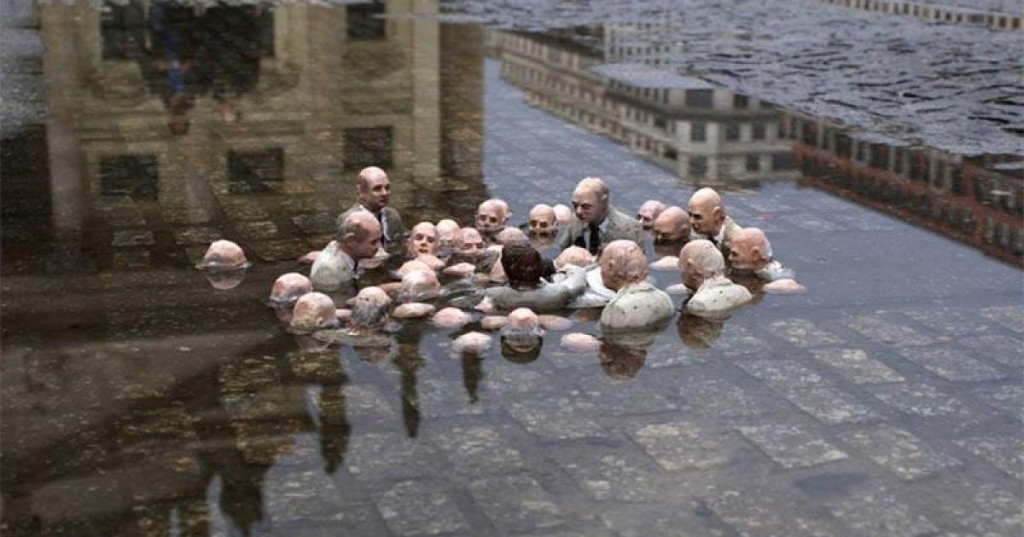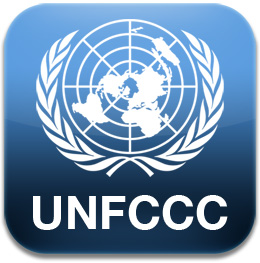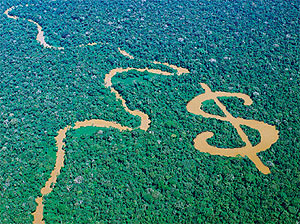
Realists, believers that international anarchy means unavoidable conflict, predict a bleak future in regards to climate change. This paradigm in the study of international relations regards power as the driving force in nation state interactions. Realism tries to understand the interactions and conflicts that arise. Through this lens, nation states act out of self interest in the unrelenting pursuit of power. Cooperation among nations is limited; there is no higher order in international governance to enforce agreements among countries.[1]
Realism is only one of many paradigms with which to view the world in the study of global politics. Furthermore, paradigms do not explain every historical and future event. These lenses are explainers and predictors in their most pure, almost exaggerated, form. Unlike the hard sciences, these paradigms can co-exist; in some situations, some models will be more helpful than others in analyzing the causes of an event. Other major paradigms include liberalism, constructivism, feminism, and neo-Marxism. Neo-Marxism is the only one that, like realism, dooms the world to inherent conflict. The others believe that with certain circumstances, cooperation can replace conflict in global politics. However, neo-Marxism sees economics as the driver of politics and, in an inherently unequal system, conflict is inevitable and cooperation is fleeting.[2] When considering the current handling of climate change, neo-Marxism is the best lens with which to predict the outcome of the international effort to attempt to mitigate the effects of global warming.
Looking at the debate around mitigating climate change, most of the conflict has been due to disparities in economies. The United States refused to ratify out of the Kyoto Protocol because China, as a non-Annex 1 nation, did not have any legally binding restrictions on emissions. This meant that the U.S. would have a distinct disadvantage in the global markets. China would be able to produce goods more cheaply, without having pay for the externality of emissions. They would also be more attractive to multinational businesses looking to lower the expenses of regulating pollution in production. Because of this conflict in economy, nation states could not cooperate and the Kyoto Protocol launched into effect without the ratification of the (then) largest contributor of greenhouse gas emissions, the United States.
When negotiating climate change mitigation strategies on a multinational scale, the barrier to cooperation is often economics. The fossil fuel industry is seen as so fundamental to the culture of development, that restrictions and regulations are often perceived as a direct threat to jobs and income. It is true, we must suffer a reduction in GDP now in order to prevent more dire losses in production in the future. According to the Stern Review, in order to stabilize greenhouse gases at around 500-550 ppm, the world would suffer an annual loss of 1 percent global GDP by 2050. However, this cost is low relative to the cost of inaction. A 5-6ºC warming could cause a 5-10 percent reduction in global GDP.[3] Nations struggle with making legislation that reduces GDP, even if it is a better long term solution. This creates tensions between actors as they attempt to negotiate the boundaries between scientific warnings and short term economics as they collaborate in a global arena.
The economies of the many nations involved in these negotiations are central to the climate change policy debate. Non-Annex 1 nations perceive it unfair to have imposed policies that could slow their growing economies. Forcing developing nations to pay for more efficient technology in order to combat a problem they historically did not cause seems unfair. These issues are now crucial sources of conflict in the policy debates. Which economies should pay to reduce global emissions? How do we weigh the luxury economies of the North to the survival economies of the South when determining cuts? Which economies will suffer the most from the effects of climate change? Questions of weight and fairness create large fissions when working among nations of differing amounts of wealth and responsibility.
Unlike realist perceptions that inherent conflict between nations stems from military power struggles, the neo-Marxist approach cites differing economies as the intrinsic barrier to global cooperation. This paradigm fits the current international negotiation surrounding climate change. However, does looking at the global mitigation of climate change through a neo-Marxist lens mean that the earth is doomed? The world might not work together as well as the climate scientists are saying they must, but the future is simply uncertain. Neo-Marxism only states that international cooperation is difficult, not impossible. The question is whether nation states can act together quickly and forcefully enough to prevent the worst effects of climate change upon their citizens. It is a mystery as to whether the international community will cooperate well enough to prevent the great conflicts and deaths that will arise from the new, hotter earth we are creating. What are important, regardless of the outcome, are the serious actions that citizens and governments take now in attempt to avoid disaster.
[1] Bova, R., 2011, “How to think about world politics, realism and its critics” (pp 3-37). In R. Bova, How the World Works: A Brief Survey of International Relations, Longman Publishing, pp 3-37.
[2] Bova, R., 2011, “How to think about world politics, realism and its critics” (pp 3-37). In R. Bova, How the World Works: A Brief Survey of International Relations, Longman Publishing, pp 3-37.
[3] Stern, N. (2006). “Summary of Conclusions.” Executive summary. Stern Review Report on the Economics of Climate Change (pre-publication edition). HM Treasury.













